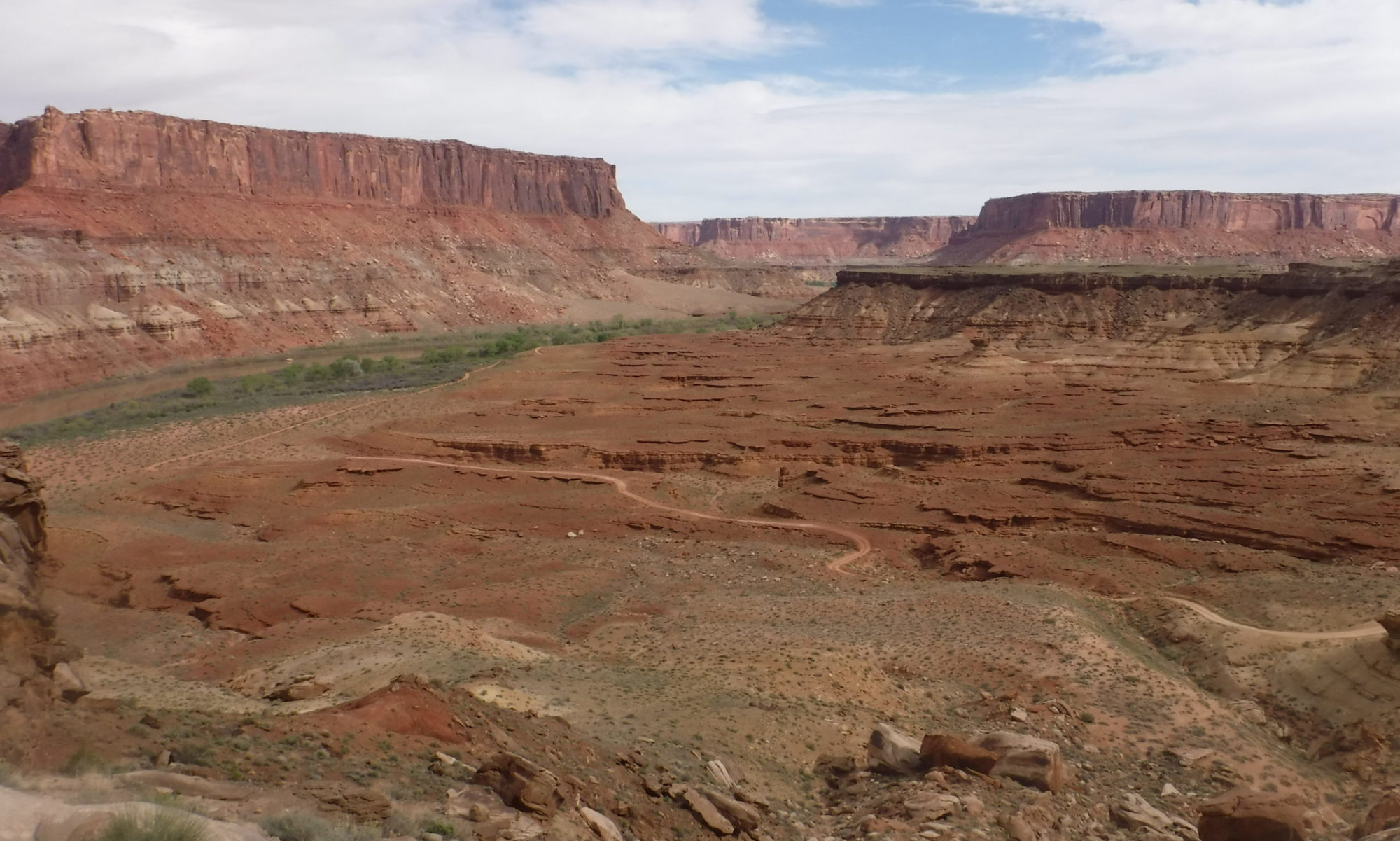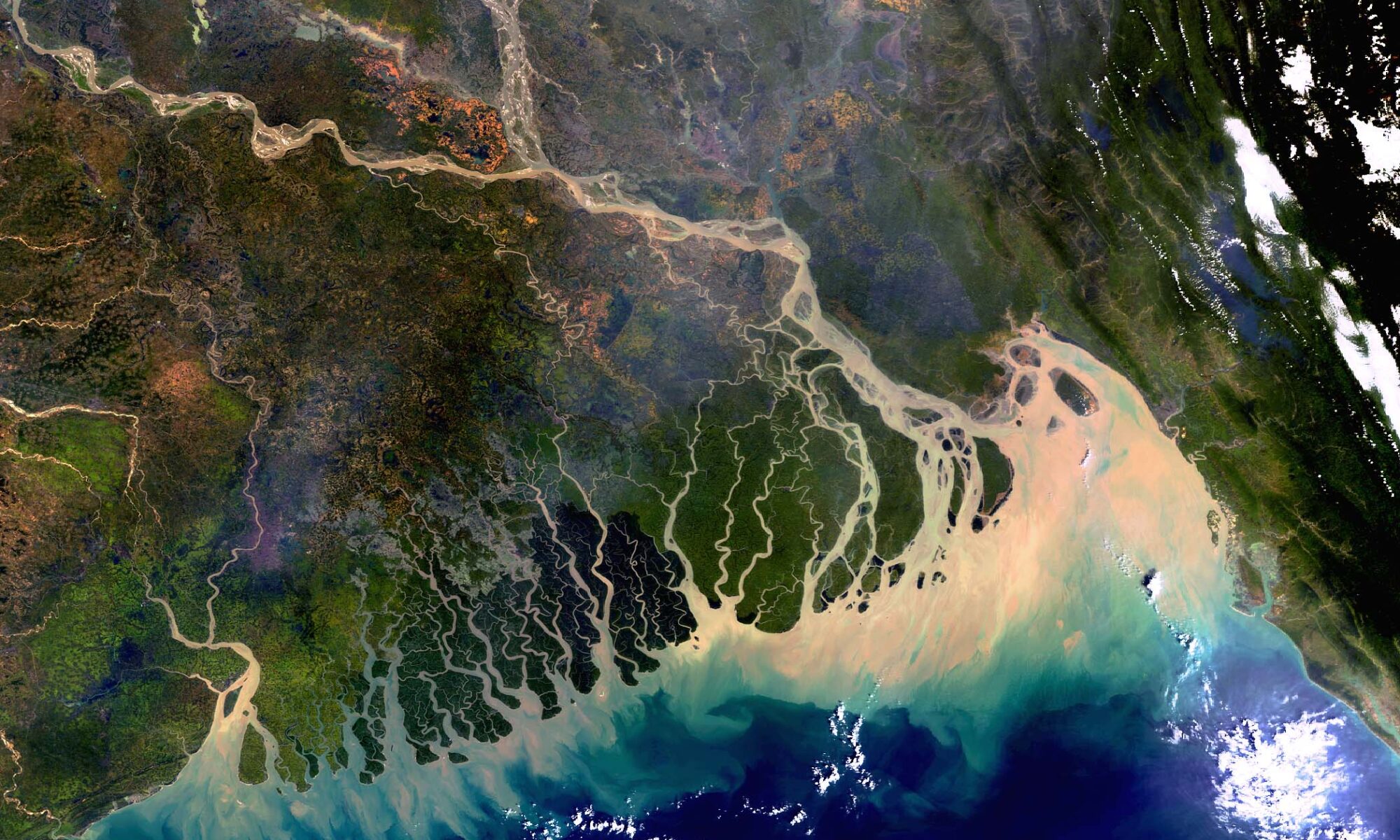Featured image: A satellite image of the Ganges – Brahmaputra delta along the Bangladesh coastline.captured by the Envisat satellite of the European Space Agency (ESA). The image also shows sediment plumes in the coastal area. (Image credit: ESA CC BY-SA 3.0 IGO)
Authors: Jessica L. Raff, Steven L. Goodbred Jr., Jennifer L. Pickering, Ryan S. Sincavage, John C. Ayers, Md. Saddam Hossain, Carol A. Wilson, Chris Paola, Michael S. Steckler, Dhiman R. Mondal, Jean-Louis Grimaud, Celine Jo Grall, Kimberly G. Rogers, Kazi Matin Ahmed, Syed Humayun Akhter, Brandee N. Carlson, Elizabeth L. Chamberlain, Meagan Dejter, Jonathan M. Gilligan, Richard P. Hale, Mahfuzur R. Khan, Md. Golam Muktadir, Md. Munsur Rahman, Lauren A. Williams
The Ganges – Brahmaputra delta is the largest river delta in the world, covering an area of 1,00,000 sq. km. About two-thirds of the delta lies in Bangladesh, and the rest in the Indian state of West Bengal. Today, sea level rise due to climate change poses a massive challenge to the delta region which more than 200 million people call home!
The delta is formed by two major rivers of the Indian subcontinent, the Ganges and the Brahmaputra and is one of the most fertile landmasses in the world. Previous studies conducted in the Ganges – Brahmaputra delta have emphasised rehabilitating people and artificial structures as solutions to sea level rise. A new study carried out by Raff et al. highlights how increased sediment production can compensate for sea level rise. The authors have also discussed the threats that big construction projects like dams pose to this natural mechanism.
Firstly, what are sediments? Sediments are weathered rocks or organic matter. Sediment supply is closely related to the precipitation in a region. More rainfall means more weathering of rocks, and organic matter and thus a larger sediment supply. Under natural conditions, the sediments carried by rivers are deposited at the mouth of the river forming deltas. In the case of the Ganges and the Brahmaputra rivers, most of the sediments are derived from the Himalayan mountain range and Tibet respectively. Approximately 1 billion tonnes of sediments are estimated to be transported and deposited annually by the Ganges and Brahmaputra combined. This sediment production is greatly influenced by the Indian monsoon, fluctuating in intensity over the past 14,000 years. Recent hydrological models show that the monsoon will likely intensify over the coming decades. As a result of strengthening monsoon rainfall, it is predicted that the sediment content in the rivers could increase by 34 – 60%.
It has been observed that the Ganges – Brahmaputra delta has grown in size over the last few decades. Robust monsoon rainfall and an uninhibited supply of sediments from the Himalayan mountains are behind this growth. The natural increase of sediment production from the monsoon will allow the delta to keep up with the global sea level rise. In a way, the delta has naturally reclaimed the land lost to the sea. Very few coastal regions are as resilient as the Ganges – Brahmaputra delta to climate change!
The biggest hindrance to this natural mechanism is the construction of dams in the upstream regions of the Ganges and Brahmaputra. Such structures choke the rivers and prevent the downstream flow of sediments (like a water filter). Reduced sediment delivery to the delta would lead to flooding of the delta areas. Luckily, the Brahmaputra and the Ganges are not heavily dammed, but plans are going on to construct large hydroelectric projects on the Ganges in India and the Brahmaputra in Tibet. Bangladesh plans to construct structures like cross-dams and coastal barriers to trap sediments and reclaim the land. Lessons need to be learned from other delta regions like the Nile Delta, Mississippi Delta and Mekong Delta which have suffered due to such mega-projects.
Big infrastructure projects on the rivers will disrupt the sediment transport network in the region and invite problems like sea water ingress, increase in soil salinity and loss of land area. If new infrastructure projects like dams are constructed, the amount of sediments transported to the delta region will reduce. Hence, it would be best to leave the rivers and the delta as untouched as possible.
‘How sediments can save drowning river deltas’ by Amber Saraf is licensed under a Creative Commons Attribution-ShareAlike 4.0 International License.

